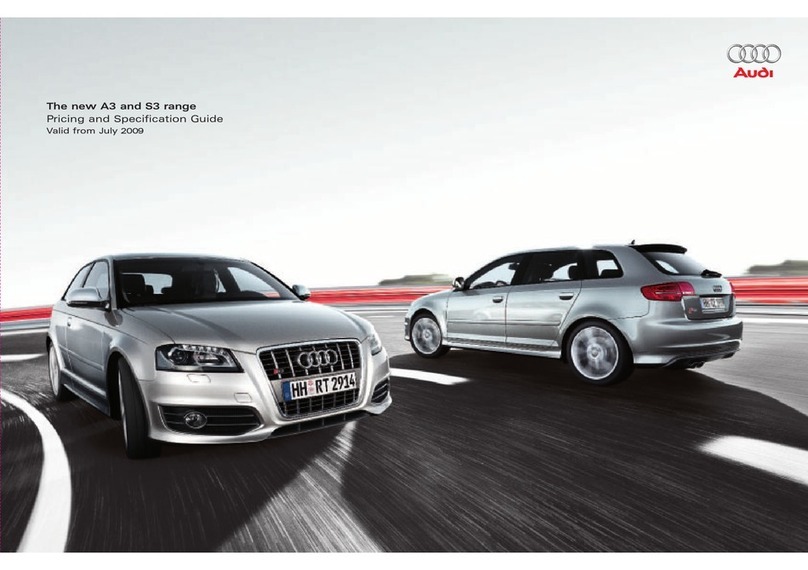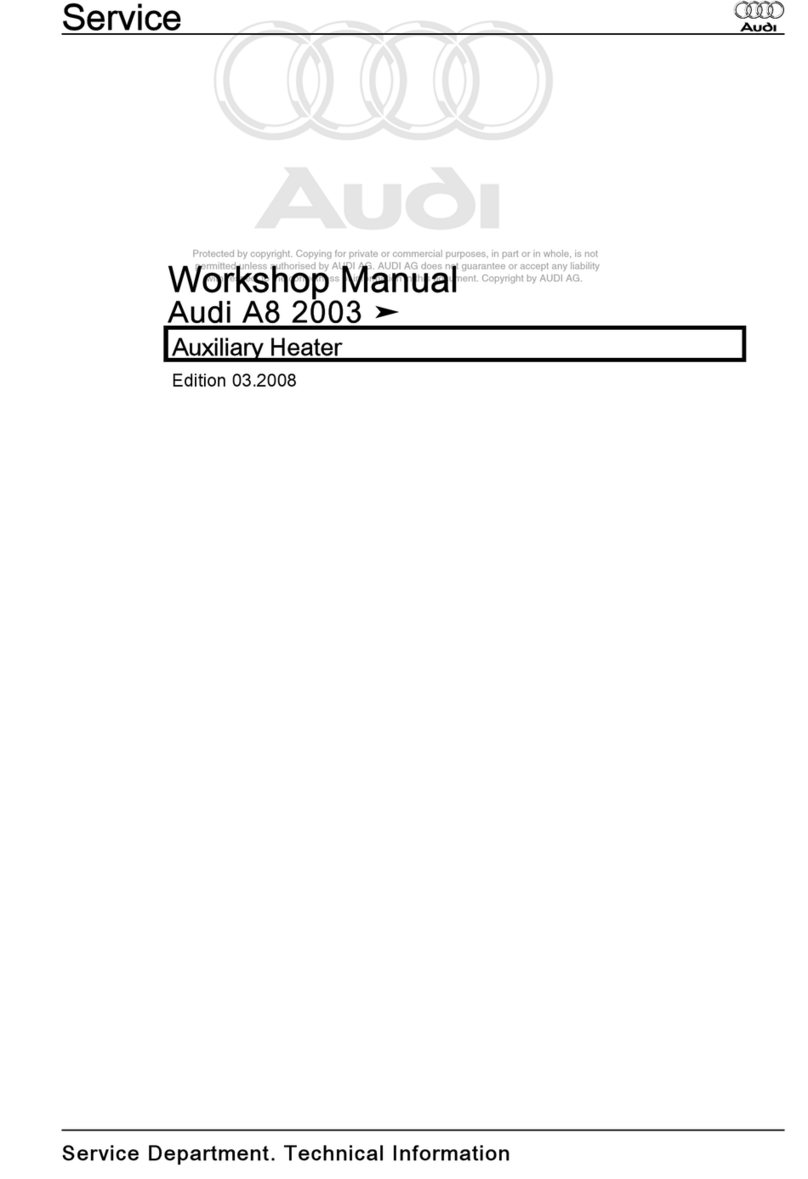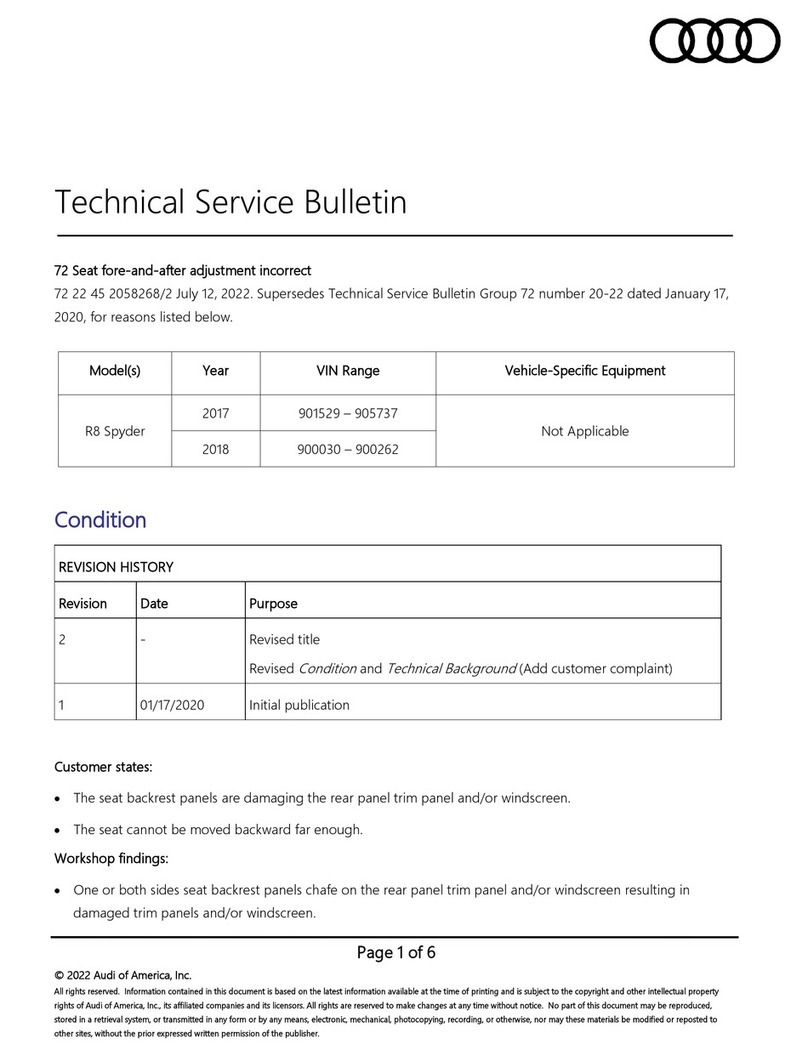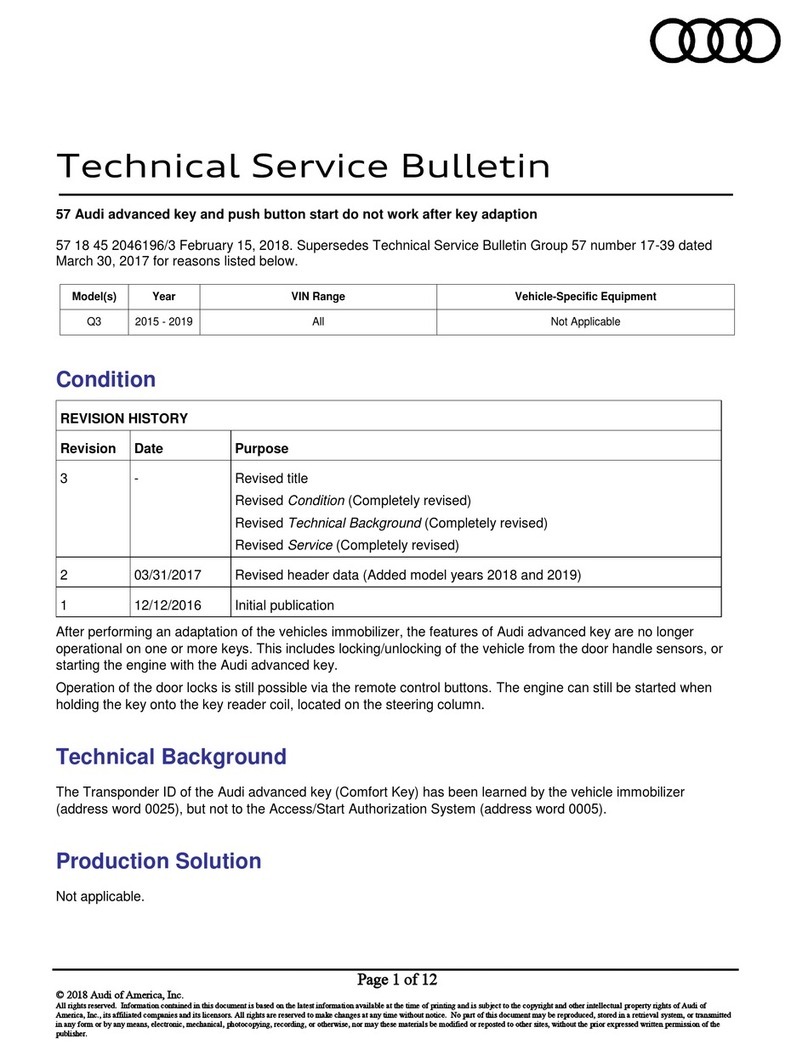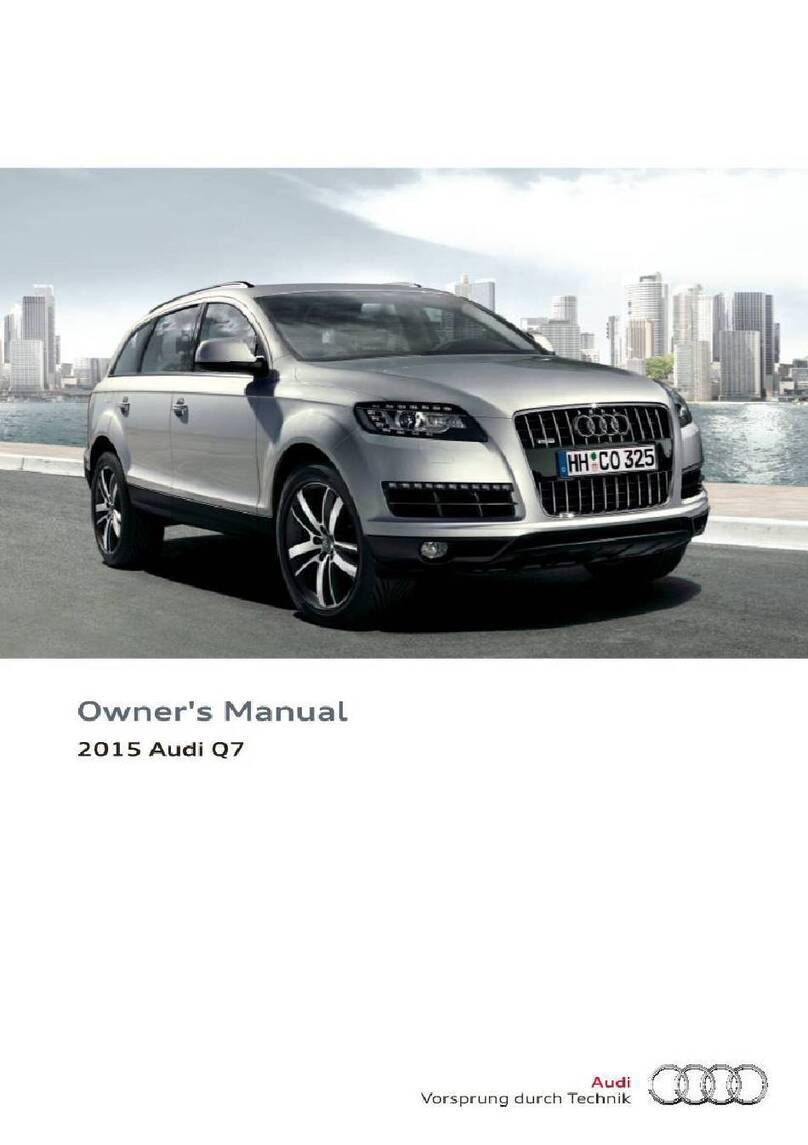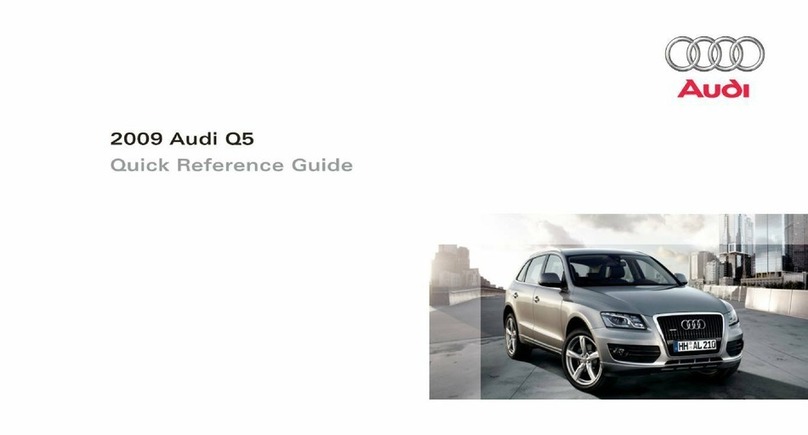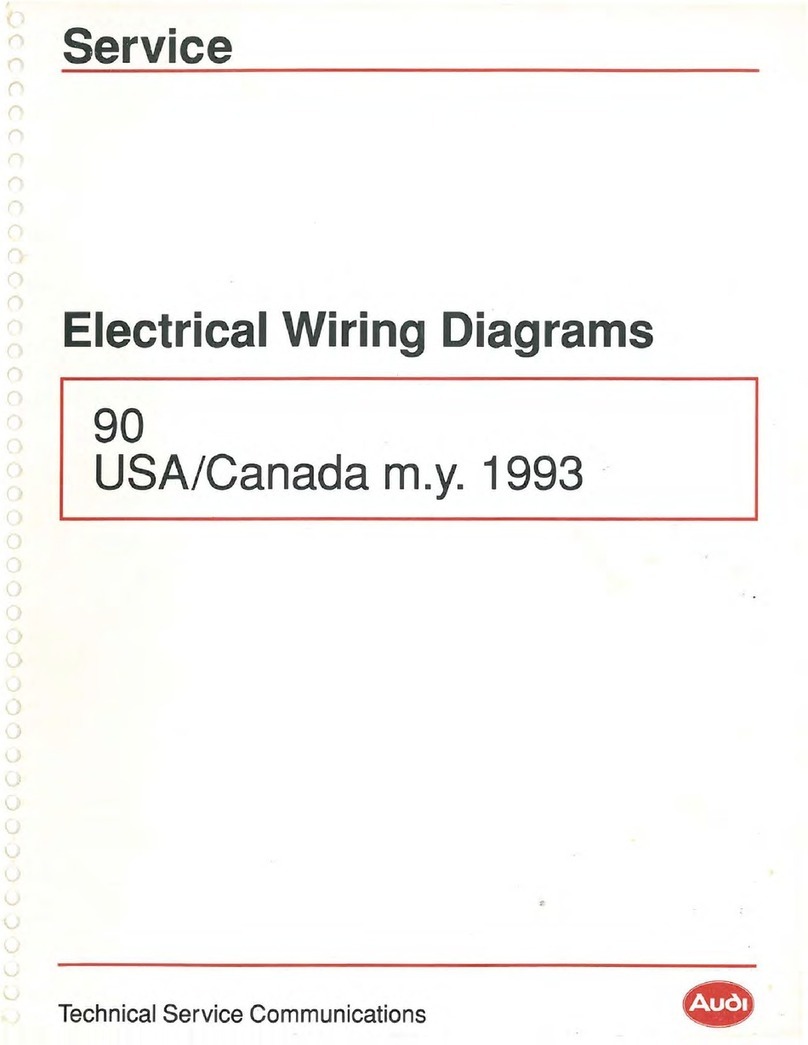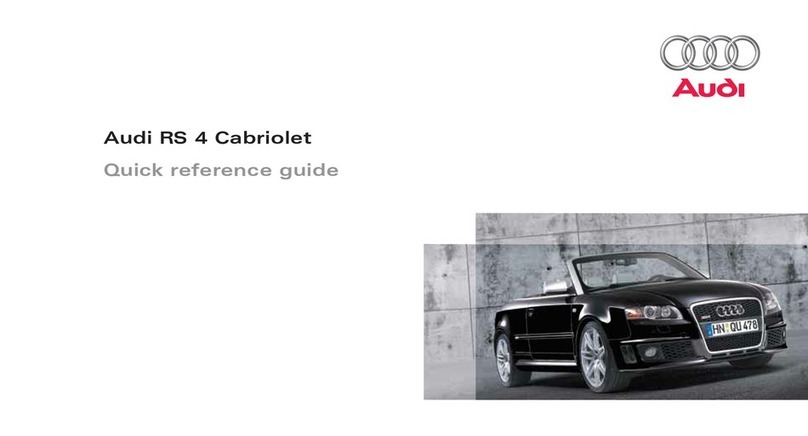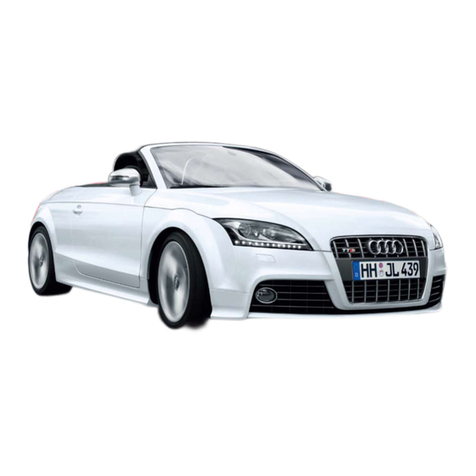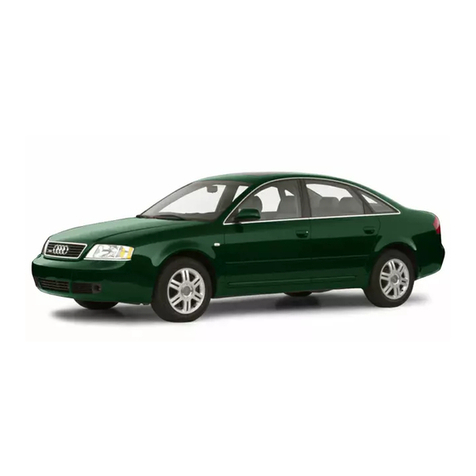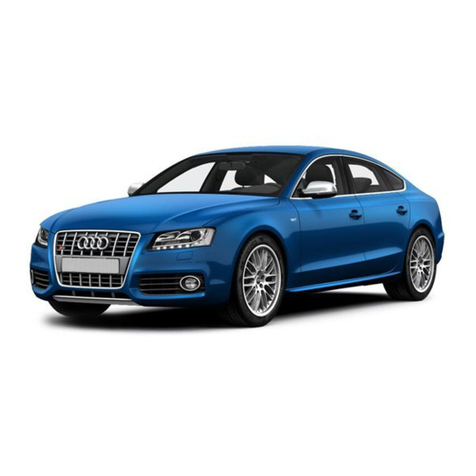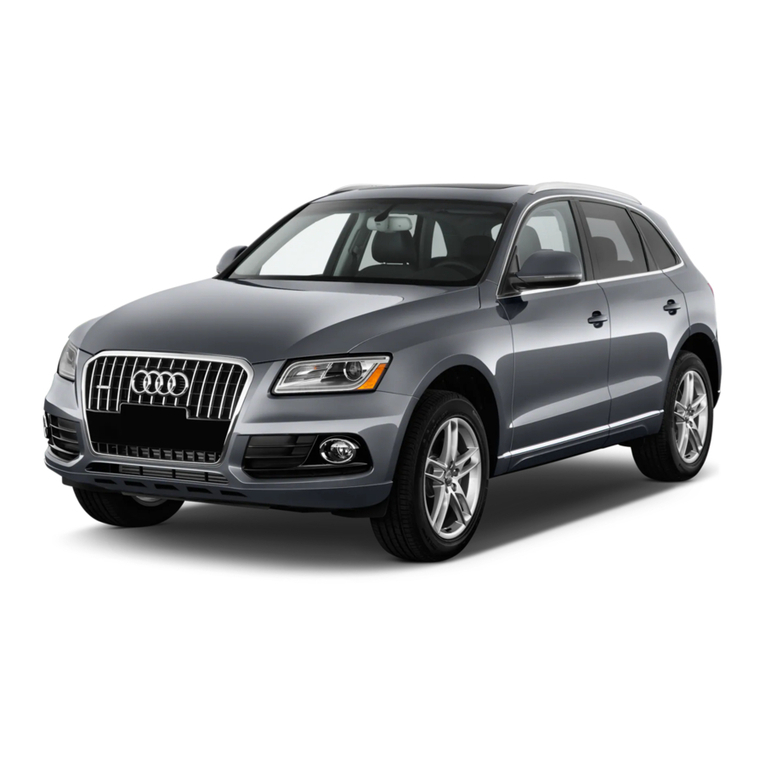10
The degree of damping of the vibration
damper has no significant influence on the
value of the natural frequency of the
bodywork. It influences only how quickly the
vibrations cease (damping coefficient). For
further information, see chapter “Vibration
damping”.
Matching of the natural frequency of the
bodywork
The axle loads (sprung masses) of a vehicle
vary, at times considerably, depending on the
engine and equipment installed.
To ensure that the bodywork height
(appearance) and the natural frequency of the
bodywork (which determines the driving
dynamics) remains practically identical for all
vehicle versions, different spring and shock
absorber combinations are fitted to the front
and rear axles in accordance with the axle
load.
For instance, the natural frequency of the
bodywork of the Audi A6 is matched to 1.13Hz
on the front axle and 1.33Hz on the rear axle
(design position).
The spring rate of the springs therefore
determines the value of the natural frequency
of the bodywork.
The springs are colour-coded to differentiate
between the different spring rates (see table).
Principles
For standard running gear without self-
levelling, the rear axle is always
matched to a higher natural frequency
of the bodywork because when the
vehicle is loaded, it is principally the
load to the rear axle which increases,
thus reducing the natural frequency of
the bodywork.
242_073
Vehicle heightNatural frequency of the bodywork
Component tolerance band
Natural frequency tolerance band
Usable load range
of a spring
Height tolerance
Axle load800 kg 850 kg 900 kg 950 kg
1.13 Hz
c
F1
= 33.3 N/mm
c
F2
= 35.2 N/mm
c
F3
= 37.2 N/mm
c
F4
= 39.3 N/mm
c
F5
= 41.5 N/mm
c
F6
= 43.7 N/mm
Spring rate levels of the front axle for the A6
